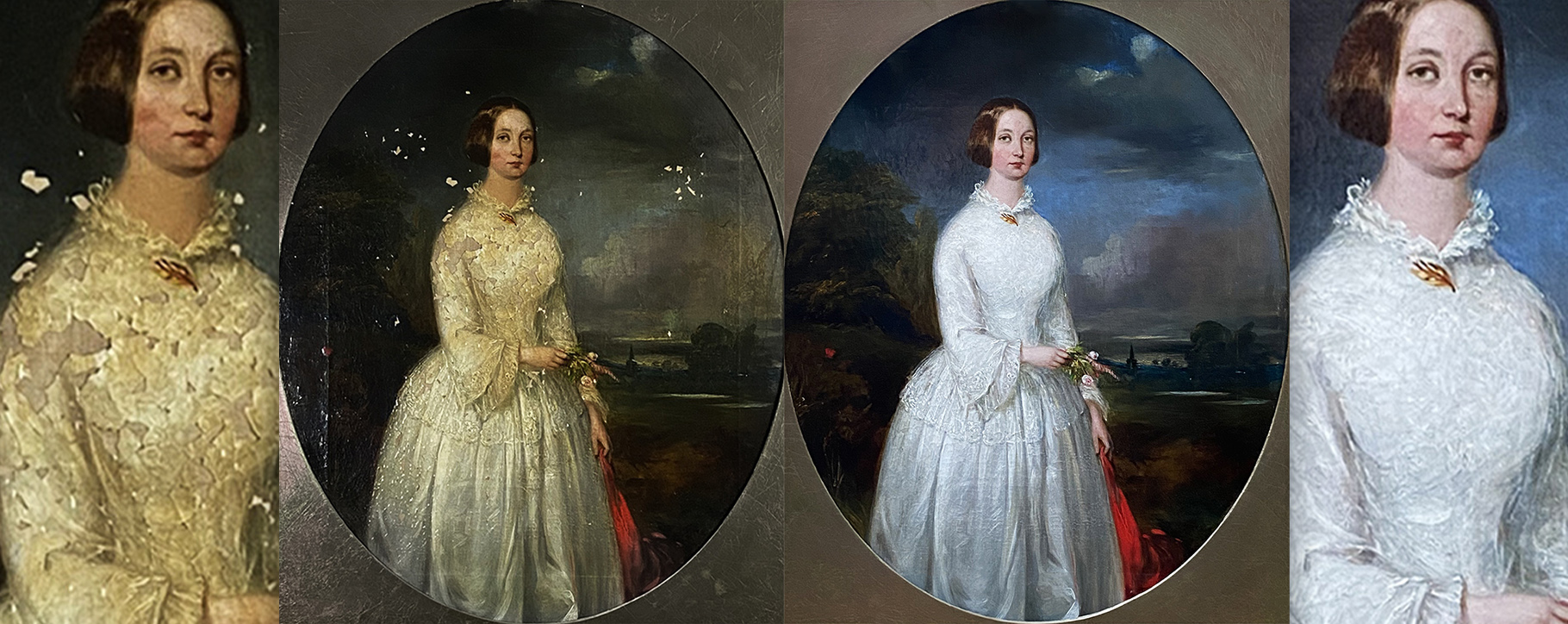A short time ago, we restored an oil painting that came into the studio with significant water damage. While our clients were able to disclose that water had affected the painting, for other oil paintings, the telltale signs of damage can be less easy to link to water ingress. If you have recently inherited a painting, re-discovered an artwork that has been in storage for some time, or purchased a painting at auction, it may have been exposed to a burst pipe, leak or flood at some point. Take a look below at some of the recognisable signs that can be attributed to water damage in oil paintings.
Cloudy varnish
While a varnish acts as protection for the paint layer, being exposed to water will eventually cause the varnish to be penetrated. The white stains are caused by the reaction of the varnish with the water.

Once the varnish layer has been compromised, the paint underneath is therefore exposed and at risk of cracking or flaking. This type of damage requires professional treatments and cannot be resolved at home.
Mould
Unfortunately, a regular companion to water damage is mould growth. The mould appears as a light or white layer, sometimes it is particularly fuzzy and dusty in texture.

The mould can first be treated and the painting fully decontaminated to halt its spread. It is important not to try and scrape or wipe the mould away, as this could lead to damaging an intact paint layer underneath. Neither should paint be added to cover up the mould – without first properly treating this issue, the problem will only be hidden and not solved.
Flaking and Lifting Paint
Treatment to stabilise and consolidate flaking and lifting paint is a common cause for restoration. There are numerous reasons why the paint layer can begin to lift away from the canvas, with water damage being one of them. As mentioned with regards to blooming, when the varnish layer is compromised, the paint underneath loses protection and is subsequently at risk. The paint layer becomes more fragile when exposed to water and a damp canvas does not make a good support.

Due to flaking paint being a frequent issue, it is understandable not to immediately realise that water has caused such damage. One telltale sign that the flaking paint is caused by water damage can sometimes be the pattern of paint losses. If the losses run vertically, that is normally a good indication that water has spread in this way down the painting.
Staining of the canvas and stretcher bars
Sometimes the most quickest way to check if a painting has water damage is by examining the back of the canvas and the stretcher bars. For water damaged paintings, there is often a very dark and substantial stain, and a similar patch may also be seen on the stretcher bars. If varnish permeates through the canvas it is possible to confuse this with water marks, but water staining will have a more defined border whereas marks from varnish will likely not be confined to one area of the painting.
If you would like to know more about how we restore water damaged oil paintings, you can also read our case study.
If you think your painting may have experienced water damage and you would like our advice, please contact us for our detailed, obligation-free recommendations.






